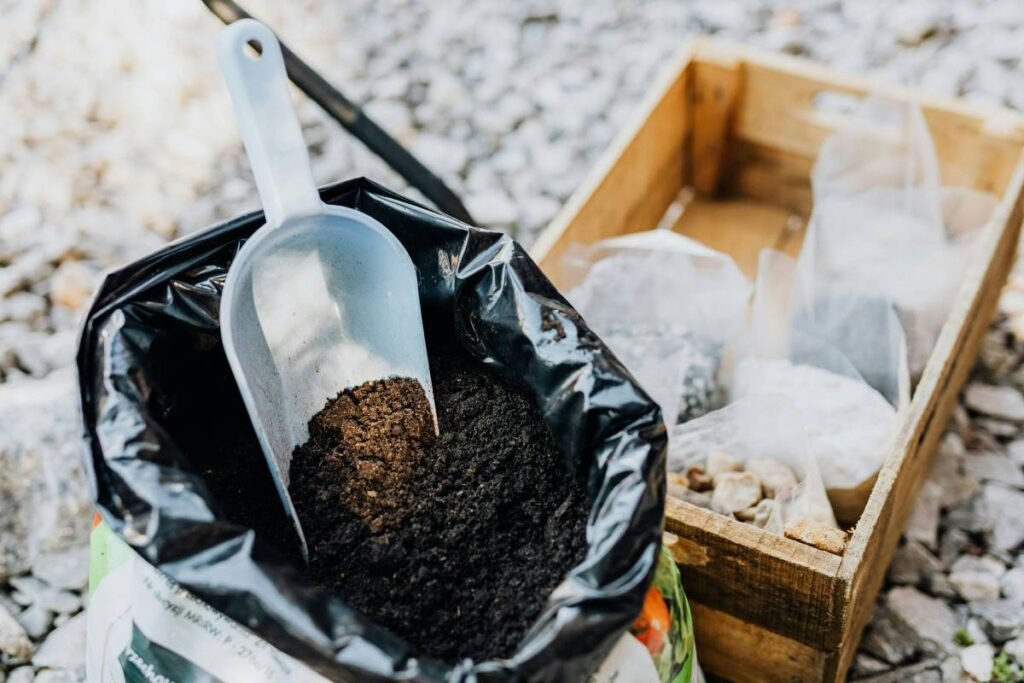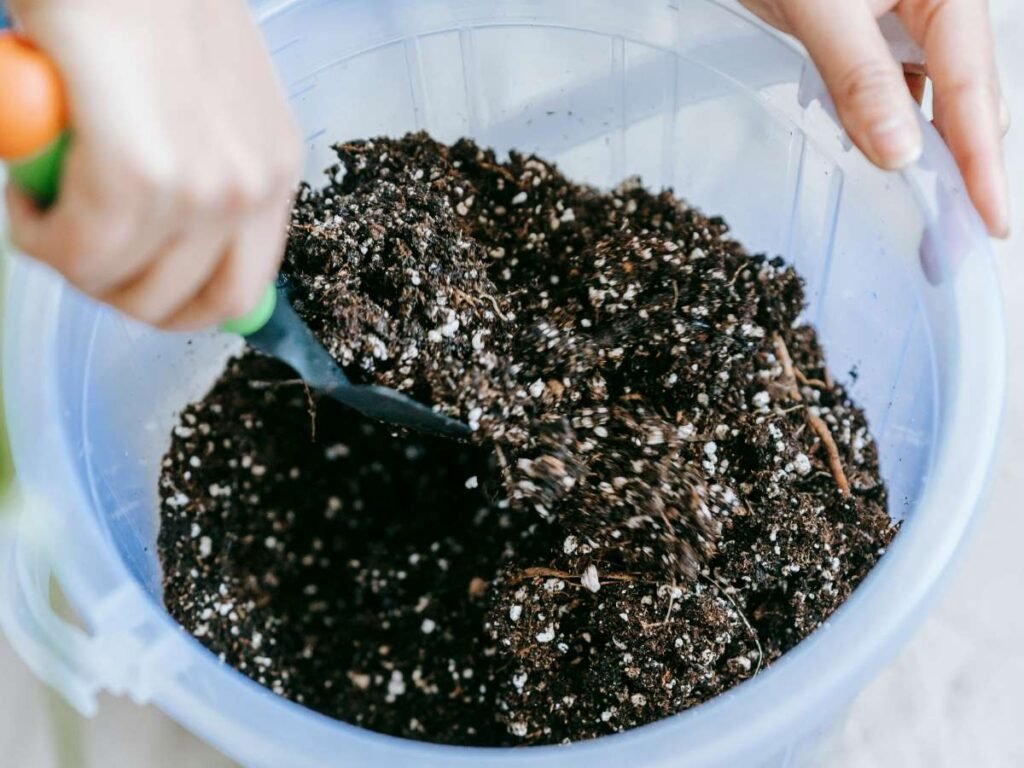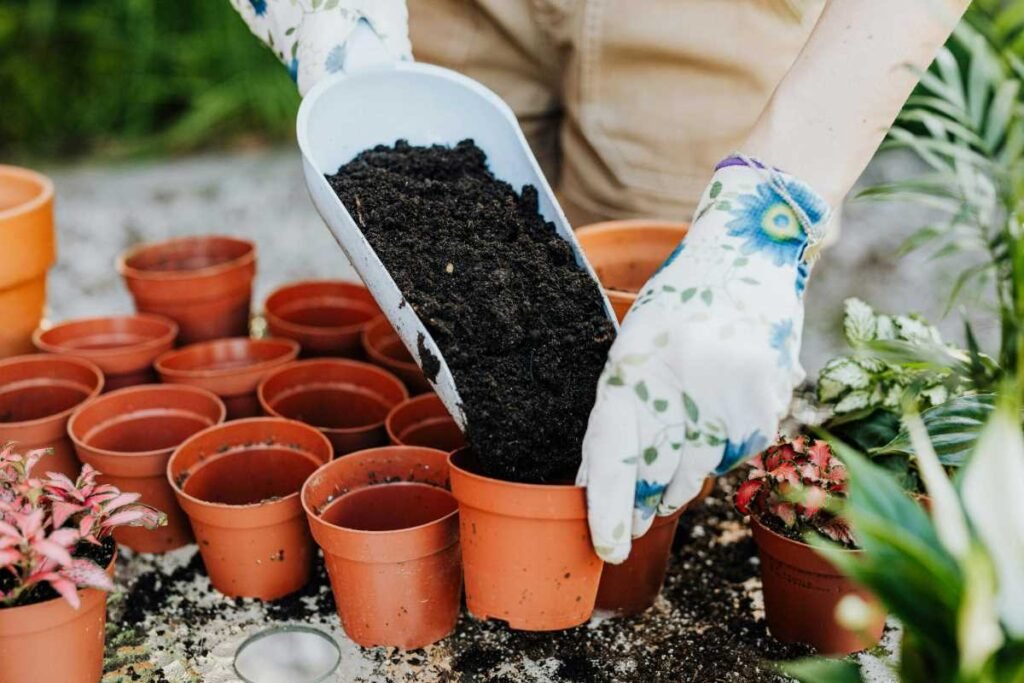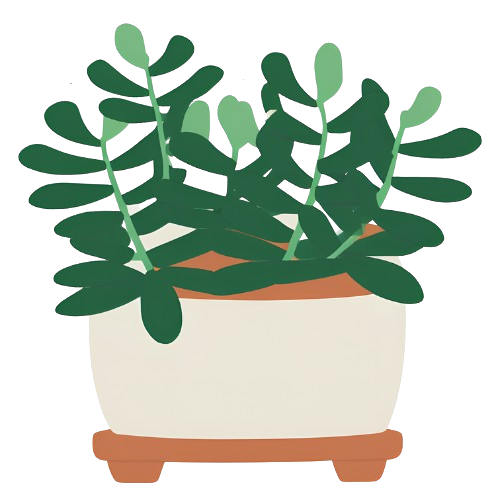If you’ve ever gazed at your jade plant sitting in the corner of your living room, you might have wondered what more you could do to help it thrive. I was in the same boat not long ago. My jade plant looked okay—not dying, but not exactly bursting with life either. That’s when I stumbled into the world of homemade fertilizers.
Making your own fertilizer for jade plants isn’t just cost-effective; it’s also a way to recycle items from around your house. Better yet, you control exactly what goes into your plant’s food. No mystery chemicals. No wondering if you’re doing more harm than good.
I’ve spent years testing different homemade fertilizer recipes on my own jade collection. Some worked wonders. Others? Well, let’s just say my plants and I learned some tough lessons together.
Today, I’m sharing everything I’ve learned about making fertilizer at home specifically for jade plants. Whether you’re a seasoned plant parent or just starting out, these simple solutions will help your jade plant grow stronger, greener, and more beautiful than ever.
Let’s dig in!

Table of Contents
Understanding Your Jade Plant’s Nutritional Needs
Before we start mixing up fertilizers in the kitchen, we need to know what jade plants actually want. Jade plants (Crassula ovata) aren’t like hungry teenagers who need feeding all the time. They’re more like that friend who eats like a bird.
Jade plants are succulents that store water and nutrients in their thick leaves. They evolved in the dry regions of South Africa, where soil isn’t exactly rich in nutrients. This means they don’t need much fertilizer, but when they do get it, they like it balanced.
The three main nutrients plants need are:
- Nitrogen (N): Helps with leaf growth
- Phosphorus (P): Supports root development and flowering
- Potassium (K): Improves overall plant health and disease resistance
For jade plants, a balanced mix works best. Too much nitrogen can make them grow quickly but with weak stems. Not enough phosphorus means they won’t flower well. And without potassium, they might look sad and get sick easily.
The good news? Many items around your home contain these nutrients in forms jade plants can use.
When to Fertilize Your Jade Plant

Timing matters with jade plants. Feed them at the wrong time, and you might do more harm than good.
The best time to fertilize jade plants is during their growing season—spring and summer. During fall and winter, jade plants enter a rest period. They grow slowly or not at all. Feeding them during this time can stress them out.
I make a note on my calendar to fertilize my jade plants once a month from March through August. Then I stop completely from September through February. This schedule has worked wonders for my plants.
Signs your jade plant might need fertilizer include:
- Slow growth during growing season
- Pale or yellowing leaves (when not caused by overwatering)
- Small new leaves
- No signs of flowering in mature plants
Remember that underfeeding is better than overfeeding with succulents like jade plants. When in doubt, use less fertilizer or skip a feeding.
Kitchen Scrap Fertilizers for Jade Plants
Let’s start with the simplest homemade fertilizers—things you’d normally throw away after cooking dinner.
Banana Peel Tea
Banana peels are packed with potassium, which helps jade plants build strong cell walls and resist disease.
To make banana peel tea:
- Save 2-3 banana peels
- Cut them into small pieces
- Place in a jar and cover with water
- Let sit for 24-48 hours
- Strain the liquid
- Dilute 1 part tea to 5 parts water
I use this mild fertilizer once a month during growing season. The first time I tried this, I was amazed at how my jade plant perked up within just a week. The leaves seemed firmer and took on a deeper green color.
Eggshell Fertilizer
Eggshells are mostly calcium carbonate—the same stuff limestone is made of. Calcium helps strengthen cell walls and can help jade plants grow properly.
To make eggshell fertilizer:
- Rinse and save eggshells from cooking
- Let them dry completely
- Crush them into a fine powder (a coffee grinder works well)
- Sprinkle 1 teaspoon around the base of your jade plant
- Gently mix into the top layer of soil
The calcium releases slowly over time. I add a bit of eggshell powder every three months or so. My older jade plants especially seem to benefit from this extra calcium boost.
Coffee Grounds
Used coffee grounds add organic matter and nitrogen to soil. They also help improve drainage, which jade plants love.
To use coffee grounds:
- Allow used coffee grounds to dry completely
- Sprinkle a thin layer (no more than 1/4 inch) on top of the soil
- Gently scratch into the surface
A word of caution: coffee grounds can make soil more acidic over time. Jade plants prefer neutral to slightly acidic soil. I use coffee grounds just once every three months to avoid making the soil too acidic.
Vegetable Cooking Water
The water left over from boiling vegetables contains minerals that leached out during cooking. This mild fertilizer solution is perfect for jade plants.
To use:
- Save the water used to boil potatoes, carrots, or other vegetables
- Let it cool completely
- Use as-is to water your jade plant
Just make sure you haven’t added salt to the water. Salt is harmful to jade plants. I keep a container in my fridge and collect this water whenever I cook vegetables. My plants seem to enjoy this gentle feeding method.
Tea-Based Fertilizers
Both green and black teas contain tannic acid and nitrogen that can benefit jade plants. Tea makes a gentle, easy-to-prepare fertilizer option.
Green Tea Fertilizer
Green tea provides nutrients while helping maintain proper soil pH for jade plants.
To make green tea fertilizer:
- Brew a weak cup of green tea using 1 tea bag and 2 cups of water
- Let it cool completely
- Remove the tea bag
- Use the tea to water your jade plant
I do this once a month during growing season. The antioxidants in green tea seem to make my jade plants’ leaves extra glossy.
Chamomile Tea Fungicide/Fertilizer
Chamomile tea does double duty. It provides mild nutrients and has natural antifungal properties that can help prevent root rot—a common problem with overwatered jade plants.
To make chamomile tea fertilizer:
- Steep 2 chamomile tea bags in 4 cups of boiled water
- Let steep for 30 minutes
- Cool completely
- Use to water your jade plant
This gentle solution works especially well for jade plants that seem a bit under the weather. I use it when I notice any black spots on stems or when the plant just doesn’t look as healthy as it should.
Compost-Based Fertilizers
Compost is often called “black gold” for plants. It’s rich in nutrients and beneficial microorganisms. For jade plants, we need to use it carefully.
Compost Tea
Compost tea provides nutrients in a form that’s immediately available to plants.
To make compost tea:
- Fill a bucket 1/3 full with finished compost
- Add water until the bucket is full
- Let sit for 24-48 hours, stirring occasionally
- Strain the liquid through cheesecloth or an old t-shirt
- Dilute 1 part tea to 10 parts water for jade plants
I use this diluted compost tea once every two months during growing season. The microbes in the tea help break down other nutrients in the soil, making them more available to your jade plant.
Worm Castings
Worm castings are worm poop—and plants love them! They contain balanced nutrients and beneficial microbes.
To use worm castings:
- Sprinkle 1 tablespoon around the base of your jade plant
- Gently mix into the top inch of soil
- Water as usual
Worm castings are gentle enough that you can use them every two months during growing season. Since I started adding worm castings to my jade plant routine, I’ve noticed more branching and fuller growth.
DIY Liquid Fertilizer Recipes
If you like to mix things up in the kitchen, these DIY liquid fertilizers are fun to make and effective for jade plants.
Seaweed Solution
Seaweed contains trace minerals and growth hormones that can help jade plants thrive.
To make seaweed fertilizer:
- Purchase dried seaweed (like kelp) from a garden center
- Add 1 cup of dried seaweed to 1 gallon of water
- Let steep for 3-4 days
- Strain and store the liquid
- Dilute 1 part seaweed solution to 5 parts water
I use this once every two months. The trace elements in seaweed seem to give jade plants that extra something special—better color and more robust growth.
Epsom Salt Solution
Epsom salt provides magnesium and sulfur, which help plants produce chlorophyll and process other nutrients.
To make an Epsom salt solution:
- Dissolve 1 teaspoon of Epsom salt in 1 gallon of water
- Use this solution in place of regular water once every three months
This is especially helpful if your jade plant’s older leaves start yellowing between the veins. My oldest jade plant gets an Epsom salt treatment twice a year, and it seems to keep the older leaves looking healthy.
Molasses Feed
Molasses feeds beneficial soil microbes, which in turn help your jade plant.
To make a molasses solution:
- Mix 1 teaspoon of unsulfured blackstrap molasses in 1 gallon of water
- Use in place of regular watering once every two months
The sugars in molasses feed soil microorganisms, creating a more active soil ecosystem. Since jade plants naturally grow in poor soil, this approach helps simulate a more natural environment while still providing nutrients.
Homemade Slow-Release Fertilizers
Sometimes you want a fertilizer that keeps working for weeks or months. These slow-release options provide steady nutrition.
DIY Fertilizer Spikes
These homemade fertilizer spikes slowly release nutrients each time you water.
To make fertilizer spikes:
- Mix equal parts:
- Dried coffee grounds
- Crushed eggshells (powdered)
- Epsom salt
- Add just enough water to make a thick paste
- Form into small spike shapes
- Let dry completely (1-2 days)
- Push one spike into the soil near the edge of the pot
These spikes slowly dissolve over about 2-3 months. I make a batch each spring and use them with my larger jade plants.
Bone Meal Amendment
Bone meal is high in phosphorus, which encourages root growth and flowering.
To use bone meal:
- Purchase bone meal from a garden center
- Add 1/2 teaspoon to the soil surface
- Gently mix into the top layer of soil
Bone meal releases nutrients slowly over 3-4 months. I add it to my jade plants’ soil once at the beginning of growing season. Since using bone meal, my older plants have started flowering more reliably.
Avoiding Fertilizer Mistakes with Jade Plants
It’s easy to get excited about feeding your plants, but with jade plants, less is definitely more. Here are some common mistakes to avoid:
Overfertilizing
Signs of overfertilization include:
- White crust on soil surface
- Leaf edges turning brown
- Weak, leggy growth
- Leaves falling off easily
If you spot these signs, flush the soil thoroughly with water and hold off on fertilizing for at least 3-4 months.
Using Fresh Manure
Fresh animal manures are too strong for jade plants and can burn roots. If you want to use manure, make sure it’s been completely composted first, and use it sparingly.
Fertilizing Dry Plants
Never apply fertilizer to dry soil. Always water your jade plant first, wait a day, then apply fertilizer. This prevents fertilizer burn on the roots.
Fertilizing Sick or Stressed Plants
If your jade plant is already struggling with pests, disease, or environmental stress, hold off on fertilizing until it recovers. Adding fertilizer can further stress an already weak plant.
Seasonal Fertilizing Schedule for Jade Plants

Here’s my personal jade plant fertilizing schedule that has worked well over the years:
Spring (March-May)
- Early March: Apply worm castings to wake plants up from winter dormancy
- April: Banana peel tea, diluted
- May: Compost tea, highly diluted
Summer (June-August)
- June: Green tea fertilizer
- July: Banana peel tea, diluted
- August: Seaweed solution, diluted
Fall (September-November)
- September: Very diluted compost tea (half strength of spring application)
- October-November: No fertilizer as plants prepare for dormancy
Winter (December-February)
- No fertilizer during dormant period
By following this schedule, my jade plants get the nutrients they need when they can best use them, without overwhelming their systems.
Signs Your Homemade Fertilizer Is Working
How do you know if your fertilizing efforts are paying off? Look for these positive signs:
- New growth appearing at branch tips and leaf axils
- Deep, even green color (not yellowish or too dark)
- Firm, plump leaves
- Strong stems that stand upright
- Overall compact growth pattern (not stretched or leggy)
- Small pink or white flowers (on mature plants in proper conditions)
My jade plants typically show visible improvement within 2-3 weeks of fertilizing during growing season.
Beyond Fertilizing: Other Factors for Jade Plant Success
While good nutrition is important, it’s just one piece of the puzzle. For truly thriving jade plants, pay attention to these factors too:
Light Requirements
Jade plants need bright, indirect light with some direct morning sun if possible. Too little light causes weak growth, regardless of fertilizer.
Watering Practices
Let the soil dry out completely between waterings. Overwatering causes more jade plant deaths than any other factor.
Soil Composition
Use well-draining cactus/succulent soil. Even the best fertilizer won’t help if roots are sitting in soggy soil.
Temperature Conditions
Jade plants prefer temperatures between 65-75°F (18-24°C) during the day and slightly cooler at night.
Pot Selection
Use containers with drainage holes. Terracotta pots are especially good as they allow soil to dry more quickly.
Conclusion
Making homemade fertilizer for your jade plant isn’t just good for your wallet—it’s good for your plant too. By using simple ingredients from around your house, you can create custom fertilizers that provide exactly what your jade plant needs, when it needs it.
Remember that jade plants evolved to survive in harsh conditions with minimal nutrients. They don’t need much feeding to thrive. When in doubt, under-fertilize rather than over-fertilize.
I’ve watched my jade plant collection grow from a single small plant to over a dozen thriving specimens using these homemade fertilizer recipes. The satisfaction of seeing a jade plant respond to your care is truly rewarding.
Which homemade fertilizer will you try first? Start small, observe how your plant responds, and adjust as needed. Your jade plant will thank you with years of beautiful growth and maybe even those elusive star-shaped flowers.
Happy growing!

My name is Shahriar Robin, and I’m the creator of JadePlants.org. Growing up in a village, I developed a deep connection with nature from a young age. Plants and gardening have always been a part of my life, and jade plants, with their resilience and elegance, have held a special place in my heart. Over the years, I’ve learned so much about these fascinating plants, and I created this site to share that knowledge with you—completely free of charge.

